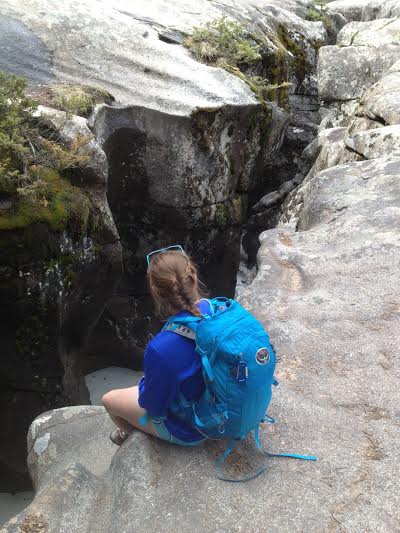When I first told my family and close friends that I would be traveling across the world to spend a month doing fieldwork in Siberia, there was a lot of jaw dropping, high fives, and questioning… why? For me, the answer to this question and the journey to Siberia started a long time ago. I grew up in a small town tucked in the Colorado Rockies. My childhood consisted of hiking, camping, and playing on the Colorado River. In short, I have always loved being outside. As I got older and was introduced to science in school, I became even more interested in the outdoors and the processes that form and change the landscape that I inhabit. I think there is something special about hiking through a canyon and not only being able to appreciate the beauty of the rushing river and intensely sloped rock walls, but also being able to understand how such a striking landscape can arise. Siberia and the tundra are drastically different from the Rockies, and I am looking forward to exploring foreign landscapes and to asking new questions- striving to understand the processes beneath my feet.

Above a small gorge in the Rockies.
I was first introduced to polar science while working as a research assistant at Wheaton College examining sea-ice dynamics using ice cores from Antarctica with Professor Matthew Evans. This experience, in addition to environmental courses offered by Wheaton faculty sparked my interest in geology as well as river chemistry and what they can tell us about the surrounding environment. For this trip in particular, our location in Siberia on the Kolyma River watershed near the Arctic Ocean provides an opportunity to look at the relationship between rivers and newly thawing permafrost. I am interested in exploring two aspects of river chemistry in Siberia, both of which will contribute to Polaris’s overall goal of understanding the fate and contribution of thawing permafrost.
First, I hope to trace ground water input in the streams and rivers. As the permafrost thaws, it is predicted that groundwater input will increase relative to surface runoff from watershed. By using various isotopes as tracers, we can monitor this input of ground water and better understand the extent of permafrost thaw. Second, I would like to measure silica concentrations in the rivers and streams. Silica can be used as a marker for chemical weathering in the waters.
While these ideas are still in very early stages, and can easily change once I get to the field, I am fascinated by the topics and hope to dive deeper into each subject in order to develop my research project for this July! Make sure you check in again for blogs from the rest of the Core Team members and an update on my own research process and the journey to Siberia.




Comments(3)-
-
-
Coach Hodgdon says
June 5, 2014 at 10:51 pmSafe travels, have fun, learn a lot and look forward to the best senior year ever!
R. Stanchfield says
July 5, 2014 at 8:24 pmHi Kenzie.I will be very interested in your future blogs. I hope that you have a fascinating month.
Love —Grandpa S.
R. Stanchfield says
July 5, 2014 at 8:29 pmHi Kenzie,
I am excited to follow future blogs. Have a greeat month.
Love–Grandpa S.